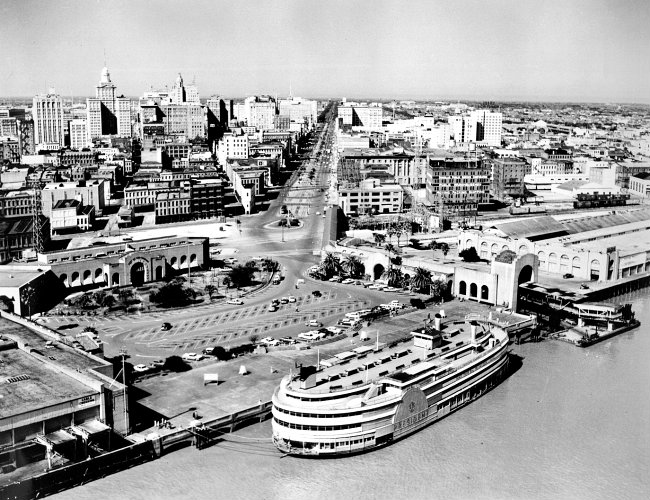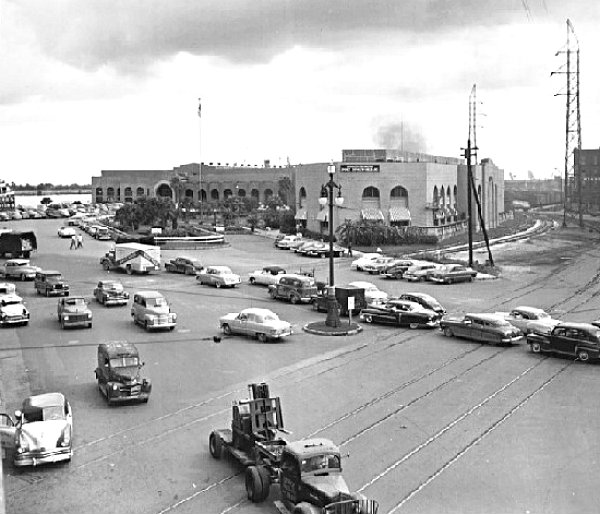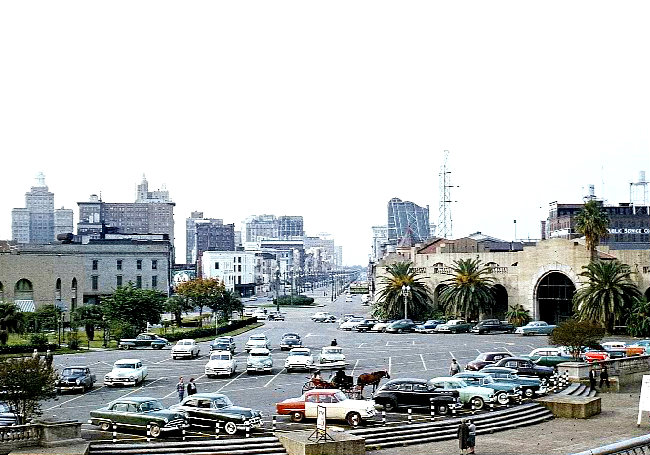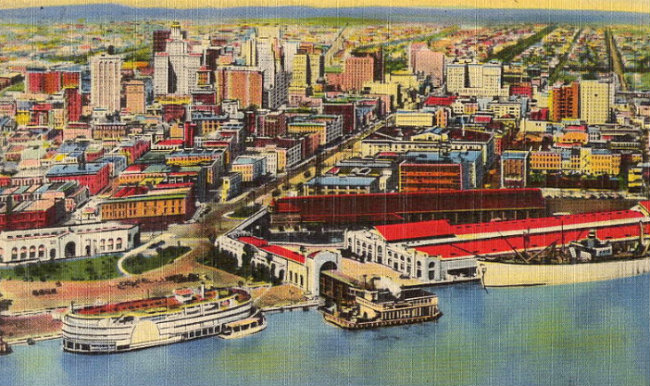| This 1960 photo of the foot of Canal Street shows the Port Commissioner's office to the left, with the garden in front; the Canal Street ferry terminal to the right; the S.S. President at the wharf. |
| EADS PLAZA |



| Very few people change the course of history, but that's what James Buchanan Eads did in 1875 -- he changed the course of history for the port of New Orleans. Later, to honor his accomplishment, the area at the foot of Canal Street was named Eads Plaza. |
| Above and below, Eads Plaza, 1950's |
| The link to this page is: http://old-new-orleans.com/NO_Eads_Plaza.html Back to Old New Orleans Whispers - Home |
| But the area has changed since then. The buildings pictured above are no longer there. For that matter, neither is the S. S. President. And neither is Eads Plaza. |
| I'm usually the first to bemoan the passing of an old building and, given half a chance, I can think of a reason that almost any building should be spared. But, I have to admit that the area near the foot of Canal Street today is beautiful: Spanish Plaza, N.O. World Trade Center, the Riverwalk, the Aquarium of the Americas. It's an area any city would be proud to claim. |
| But I'm sorry that Mr. Eads' name is no longer in view. You see, by 1870, silt had built up in the Mississippi River, making it difficult for large ships to get to New Orleans from the Gulf. What had once been the number 2 port in the country had slipped to number 13. But Mr. Eads, a self-taught engineer, had a plan. |
| His plan was controversial, but, by 1875, he'd won over the skeptics and work started on the construction of jetties, designed to narrow the river, speed the flow and wash the silt away. His plan worked perfectly and, 4 years later, New Orleans was once again an important port. |
| Today, the port of New Orleans has state-of-the-art facilities, is 1st in the U.S. based on volume of cargo handled and has the longest wharf in the world. It is the only deep water port in the U.S. served by 6 major railroads. The Port of New Orleans and the Port of the South Louisiana (upriver in Laplace, LA) combined form one of the largest port systems in the world. |
| Mr. Eads would surely be proud. Back in 1875, he saved the port of New Orleans. I hope that somewhere in the city, his name will be remembered. -- Nancy |

| Foot of Canal Street: Port Commissioner's Office on left, S.S. President at wharf, ferry is docked in front of the Canal Street ferry terminal; 1950's. |